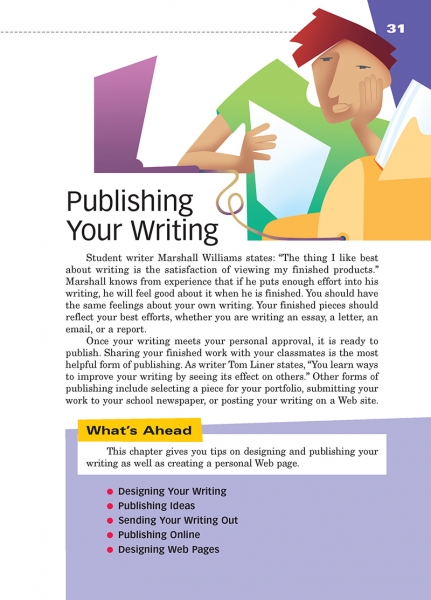Page 031 from

Start-Up Activity
Remind your students of the Dr. Seuss story Horton Hears a Who:
One day, an elephant named Horton discovered a tiny planet perched precariously on a flower. On the planet lived the Whos of Whoville, and the mayor asked Horton to save their speck from destruction. The other animals could not hear the Whos, though, and were bent on destroying the flower. The mayor got everyone in Whoville to make a great racket, trying to be heard, but to no avail. Then he discovered a slacker Who named JoJo who played with his yo-yo rather than making a racket. The mayor rushed JoJo to the top of Effelburg Tower, where the child let out a 'Yopp!' that finally broke the silence. 'We are here! We are here! We are here!' the cry rang out, and the other animals heard, and Whoville was saved.
Ask students why you told that story. After listening to their guesses, say, "It's a story about people who had something to say and were desperately trying to be heard. It's a story about persistence, not giving up until that one unlikely 'Yopp!' finally breaks through. In all of those ways, it is a story about publishing. You work hard on a piece of writing because you have something to say, and then you try all sorts of ways to get people to hear what you have to say. If you persist, you will be heard: 'We are here! We are here! We are here!'
Think About It
“And you very small persons will not have to die if you make yourselves heard! So come on, now, and TRY!”
—Dr. Seuss

Start-Up Activity
Remind your students of the Dr. Seuss story Horton Hears a Who:
One day, an elephant named Horton discovered a tiny planet perched precariously on a flower. On the planet lived the Whos of Whoville, and the mayor asked Horton to save their speck from destruction. The other animals could not hear the Whos, though, and were bent on destroying the flower. The mayor got everyone in Whoville to make a great racket, trying to be heard, but to no avail. Then he discovered a slacker Who named JoJo who played with his yo-yo rather than making a racket. The mayor rushed JoJo to the top of Effelburg Tower, where the child let out a 'Yopp!' that finally broke the silence. 'We are here! We are here! We are here!' the cry rang out, and the other animals heard, and Whoville was saved.
Ask students why you told that story. After listening to their guesses, say, "It's a story about people who had something to say and were desperately trying to be heard. It's a story about persistence, not giving up until that one unlikely 'Yopp!' finally breaks through. In all of those ways, it is a story about publishing. You work hard on a piece of writing because you have something to say, and then you try all sorts of ways to get people to hear what you have to say. If you persist, you will be heard: 'We are here! We are here! We are here!'
Think About It
“And you very small persons will not have to die if you make yourselves heard! So come on, now, and TRY!”
—Dr. Seuss